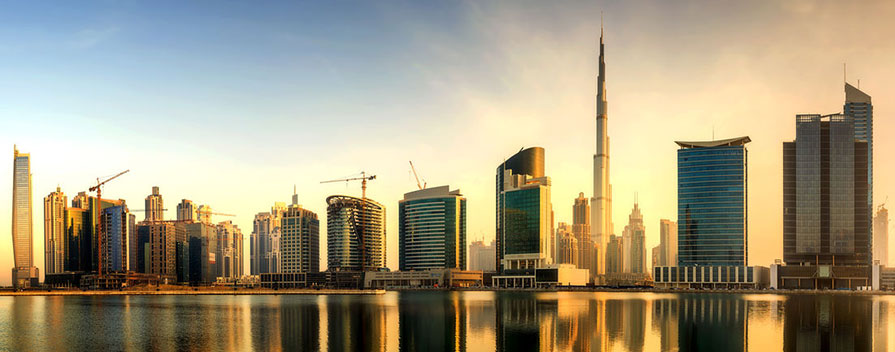Rain or Shine, The Weather Impacts Construction
The construction industry is increasingly grappling with the challenges posed by hot weather, a trend that is becoming more pronounced due to global warming. While the United Kingdom has historically enjoyed a temperate climate, recent years have seen a rise in extreme weather conditions, including heatwaves. In this article buildingspecifier.com Editor Joe Bradbury explores the impacts of hot weather on the construction sector, compares practices in the UK with those in hotter climates, and considers how the industry might adapt to changing weather patterns in the future.
The impact of hot weather on construction
Hot weather can significantly impact construction operations, affecting both the workforce and the materials used in building projects. High temperatures pose several health risks to construction workers, including heat exhaustion, heatstroke, and dehydration. These conditions not only endanger the wellbeing of workers but also reduce productivity, as physical labour becomes more taxing and frequent breaks are required to prevent overheating.
Moreover, extreme heat can exacerbate safety risks on-site, such as increased fatigue leading to a higher likelihood of accidents and injuries. The impact on materials is equally concerning; for instance, hot weather can cause asphalt to soften, creating dangerous conditions for road construction and maintenance. Similarly, the rapid drying of plaster and other finishing materials can result in cracks and a compromised finish, necessitating additional work and costs.
Practices in hotter climates: a learning opportunity for the UK
Countries with consistently high temperatures have developed specific strategies to manage the challenges posed by hot weather in construction. These practices can provide valuable insights for the UK as it faces more frequent and severe heatwaves.
Work schedule adjustments: In many hot climates, construction projects often start early in the morning to take advantage of cooler temperatures. Work is typically paused during the peak heat of the day and may resume later in the afternoon or evening. This approach helps protect workers from the most intense heat and maintains productivity.
Cooling solutions and hydration: Employers in hot countries often provide cooling stations equipped with fans, shade, and ample drinking water. Regular hydration breaks are mandatory, and workers are educated about the signs of heat-related illnesses. Such measures are crucial for preventing health issues and ensuring a safe working environment.
Material innovations and handling: In regions where high temperatures are the norm, construction materials are often designed to withstand extreme heat. For example, in parts of the Middle East, heat-resistant concrete formulations are used to prevent premature setting and cracking. Similarly, the use of lighter-coloured materials can help reflect sunlight and reduce heat absorption in structures.
Personal Protective Equipment (PPE): PPE suitable for hot weather, such as lightweight, breathable clothing and hats, is commonly provided to workers in hot climates. This gear is designed to protect against sun exposure while allowing for better air circulation and moisture evaporation.
Technological innovations in construction for hot climates
In response to the challenges posed by high temperatures, various technological innovations have emerged, particularly in regions accustomed to hot weather. One such innovation is the use of reflective coatings on buildings, which help to reduce heat absorption and maintain cooler indoor temperatures. These coatings, often applied to roofs and external walls, reflect a significant portion of solar radiation, thereby reducing the heat load on the building.
Another advancement is the development of heat-reflective paints. These paints contain special pigments that reflect infrared radiation, further aiding in keeping buildings cool. Combined with advanced insulation materials, these technologies can significantly reduce the need for air conditioning, leading to energy savings and a smaller carbon footprint.
Smart building technologies have also gained traction, particularly in urban areas of hot countries. These systems utilise sensors and automated controls to optimise energy use, manage shading systems, and regulate indoor temperatures. For example, smart windows can automatically tint to reduce glare and heat ingress, while integrated HVAC systems adjust cooling based on occupancy and external conditions.
Case studies from hot countries
To illustrate these practices, we can look at several countries that have long dealt with extreme heat. Australia, for instance, employs a range of heat mitigation strategies in its construction practices. Builders often use light-coloured materials for exteriors, which reflect more sunlight compared to darker materials. Additionally, the use of double glazing and thermal breaks in window systems helps to maintain interior coolness.

In the United Arab Emirates, a country known for its scorching summers, construction schedules are strictly regulated. The UAE enforces a midday break during the hottest months, prohibiting outdoor work between 12:30 PM and 3:00 PM. This policy not only protects workers but also aligns with the country’s labour laws focused on health and safety.
India, with its diverse climate, faces unique challenges in different regions. In the northern parts, where temperatures can soar, buildings are often designed with deep verandas and jali (perforated screens) to provide natural ventilation while shading interiors from the sun. Additionally, traditional methods such as whitewashing roofs are still prevalent, reflecting heat and reducing the temperature inside homes and buildings.
Economic and environmental impacts of heat on construction
The economic implications of extreme heat in construction are multifaceted. Heat-related delays can disrupt project timelines, leading to increased labour costs and potential penalties for missed deadlines. The need for specialised equipment and materials that can withstand higher temperatures also adds to the overall project cost. Moreover, the health impacts on workers can result in increased insurance premiums and potential liability issues for employers.
From an environmental perspective, the increased use of air conditioning and cooling systems in response to hotter weather can significantly raise energy consumption, contributing to higher carbon emissions. This increased demand for cooling can also strain the power grid, especially during peak usage times, leading to potential power shortages and increased energy costs.
The future: adapting to global warming
As global temperatures rise, the construction industry in the UK must adapt to more frequent and intense heatwaves. This adaptation involves both immediate and long-term strategies.
Short-term adjustments
Implementing Flexible Working Hours: Following the example of hot countries, UK construction firms could adopt flexible work schedules that minimise exposure to peak temperatures. This approach not only protects workers but also maintains productivity levels.
Enhancing on-site facilities: Construction sites in the UK could be equipped with better cooling facilities, including shaded rest areas and ample water supply. Employers should also consider providing training on recognising and preventing heat-related illnesses.
Material management: Adjustments in the storage and handling of materials can prevent issues related to high temperatures. For instance, storing cement in cooler, shaded areas and using additives that slow down the curing process can mitigate the impact of heat on concrete.
Long-term strategies
Investing in heat-resistant materials: As the climate continues to warm, there will be a growing need for materials that can withstand higher temperatures. Research and development into heat-resistant concrete, asphalt, and other materials will be crucial.
Rethinking building design: Architects and engineers may need to reconsider building designs to account for increased heat. This could involve the use of passive cooling techniques, such as natural ventilation, shading devices, and green roofs, which help reduce the need for air conditioning and lower energy consumption.
Regulatory changes: Government regulations and building codes may need to evolve to address the challenges posed by a warming climate. This could include setting new standards for thermal performance, mandating the use of heat-resistant materials, and ensuring that buildings are designed to provide adequate cooling and ventilation.
Sustainable construction practices: The construction industry must also consider its role in mitigating climate change. Adopting sustainable practices, such as using low-carbon materials, improving energy efficiency, and implementing waste reduction strategies, can help reduce the industry’s carbon footprint.
Conclusion
The construction industry is at a crossroads, facing the dual challenges of adapting to hot weather and contributing to the fight against global warming. The experiences of countries with hotter climates offer valuable lessons in managing the impacts of high temperatures on construction projects. By adopting flexible work schedules, enhancing on-site facilities, and investing in heat-resistant materials, the UK construction industry can better protect its workforce and maintain productivity during heatwaves.
Looking ahead, the industry must also prepare for a future shaped by rising global temperatures. This will require long-term strategies, including innovations in materials and building design, as well as changes to regulations and building codes. By embracing these changes, the construction sector can not only adapt to a warmer world but also contribute to a more sustainable and resilient built environment.
As the climate continues to change, the construction industry’s ability to adapt will be crucial in ensuring that buildings remain safe, functional, and comfortable in an increasingly hot world. The lessons from hotter climates and the proactive steps taken today will shape the industry’s future, ensuring it can weather the challenges of tomorrow.









Leave a Reply
Want to join the discussion?Feel free to contribute!